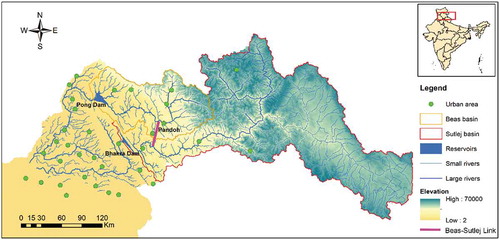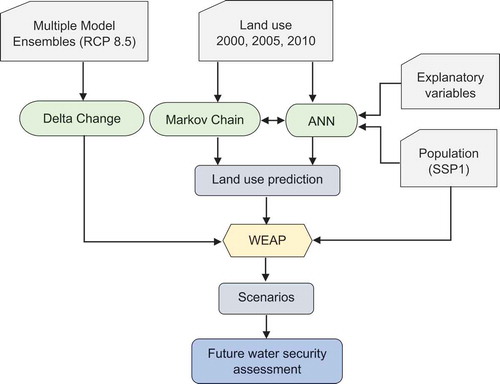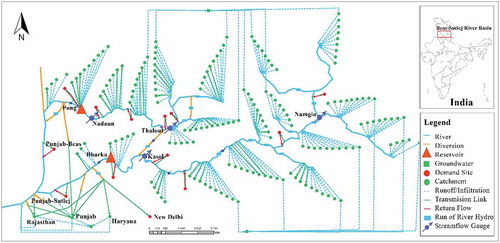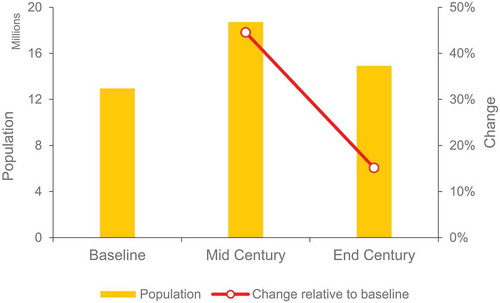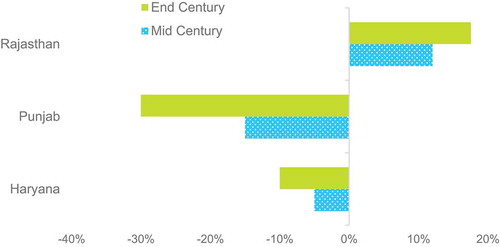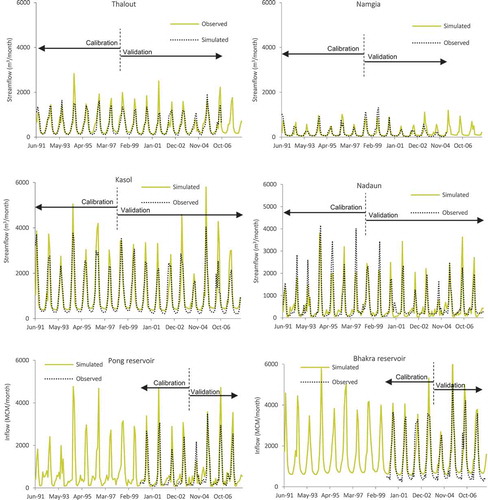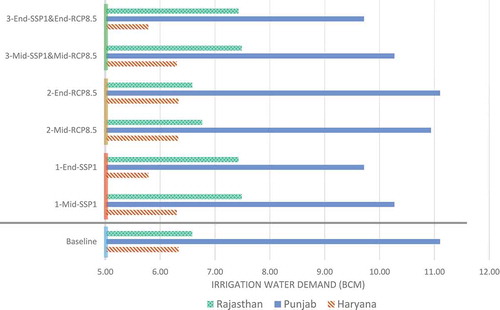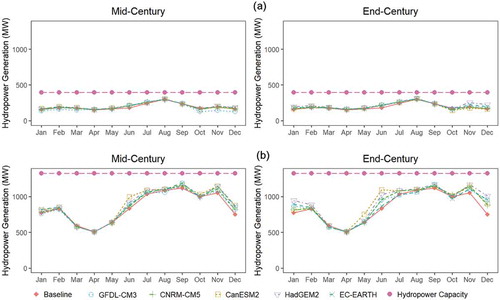Figures & data
Table 1. List of Coupled Model Intercomparison Project Phase 5 (CMIP5) climate models used
Table 2. Inputs and outputs for the Water Evaluation and Planning (WEAP) model
Table 3. Scenario testing for water security in the Beas-Sutlej river basin
Figure 4. Monthly projections and annual changes for (a) precipitation and (b) temperature in the upstream of the Himalayas
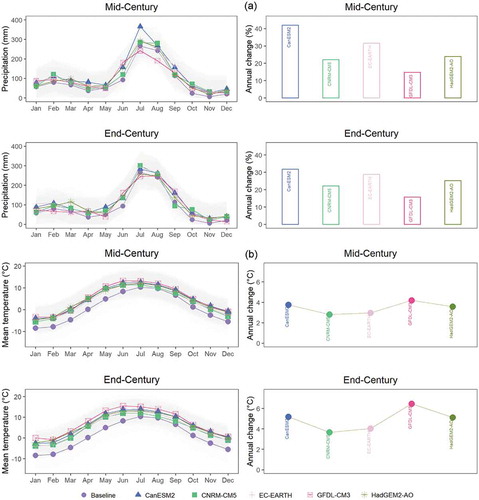
Figure 5. Ensemble mean of monthly (a) rainfall (dotted lines are the baseline) and (b) maximum and minimum temperature in irrigated areas
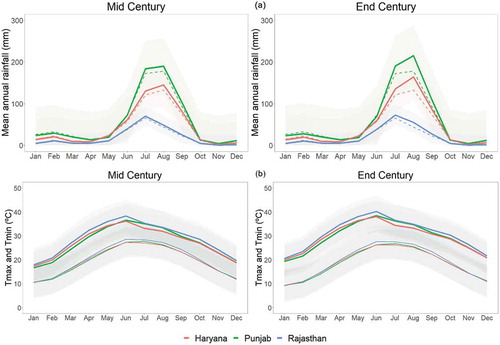
Table 4. Explanatory variables for land use change projection
Table 5. Observed and simulated land use
Table 6. Runoff generations in the Beas and Sutlej rivers measured at the Pong and Bhakra reservoirs
Figure 10. Performance indices for irrigation water allocation at (a) mid-century and (b) end-century based on different scenarios
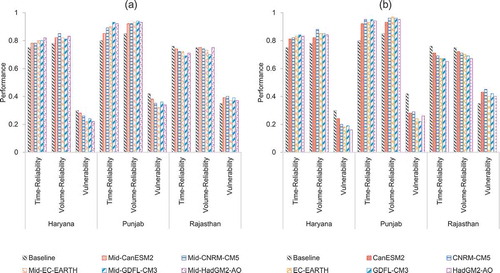
Data availability
The data that support the findings of this study are openly available in [4TU.Research Data] at http://doi.org/10.4121/uuid:b55e1df0-7dd2-4c25-bb26-54fe1121f7c8.

